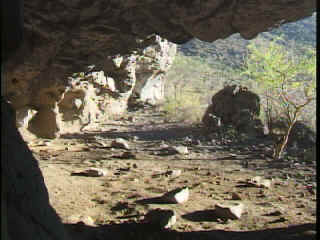
1a
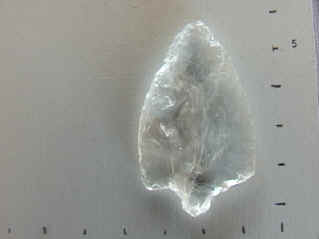
2a
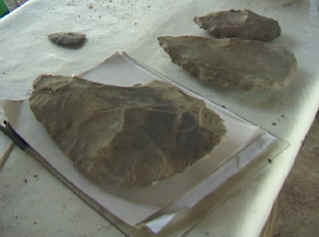
3a
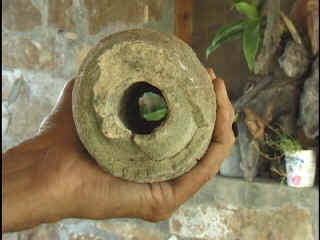
1b
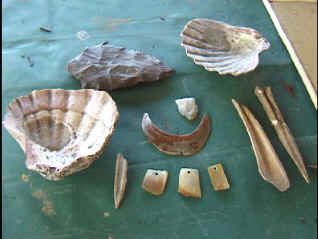
2b
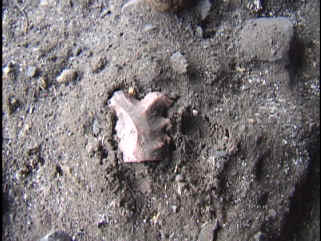
3b
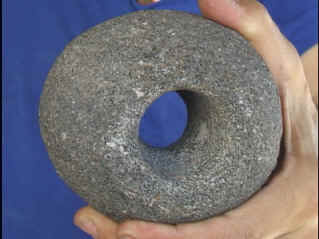
1c
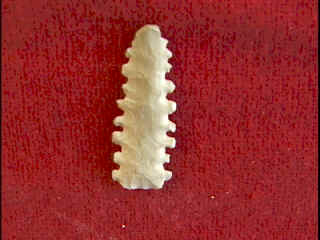
2c

3c
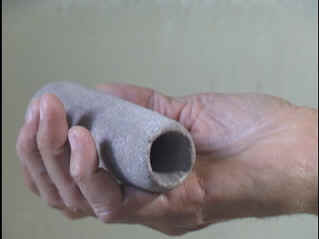
1d
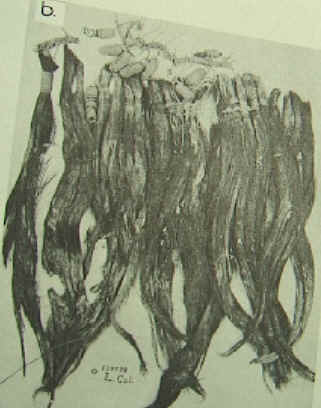
2d

3d
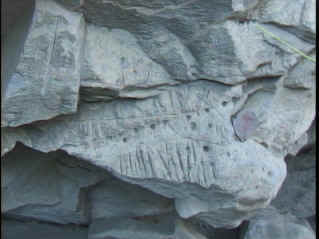
1e

2e
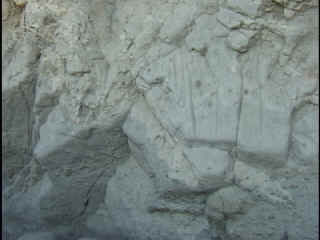
3e
| Please keep in mind that the collecting, selling or buying of Indian artifacts is prohibited by Mexican law. This is especially important because undisturbed sites allow us to gain some knowledge of these now extinct people. |
 1a |
 2a |
 3a |
||
 1b |
 2b |
 3b |
||
 1c |
 2c |
 3c |
||
 1d |
 2d |
 3d |
||
 1e |
 2e |
 3e |
Plate 3: Archaeology
 1a |
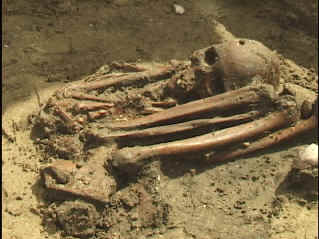 2a |
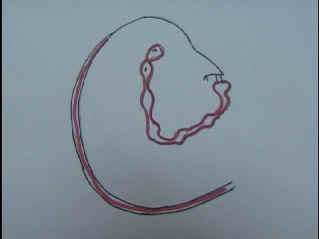 3a |
||
 1b |
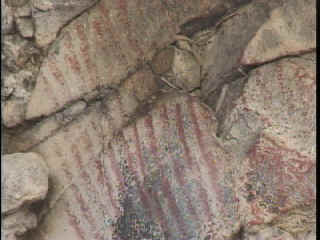 2b |
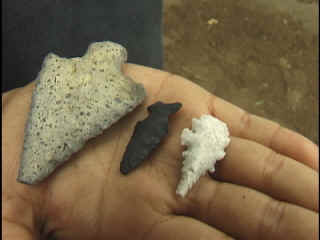 3b |
||
 1c |
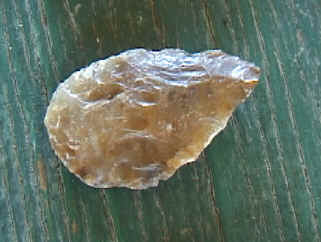 2c |
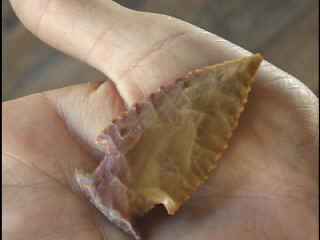 3c |
||
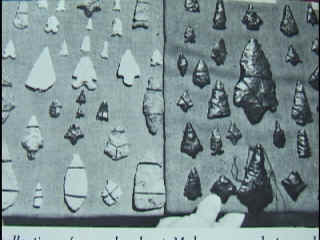 1d |
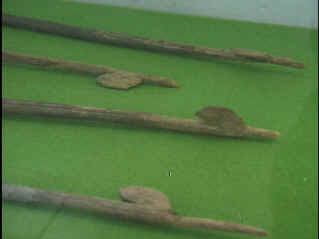 2d |
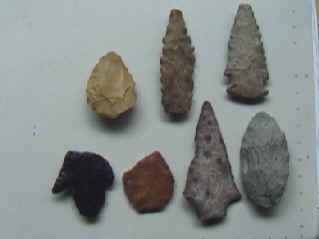 3d |
||
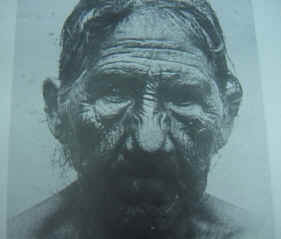 1e |
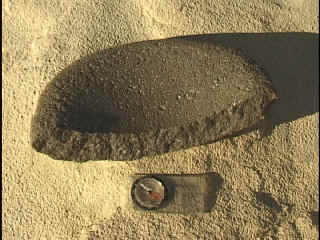 2e |
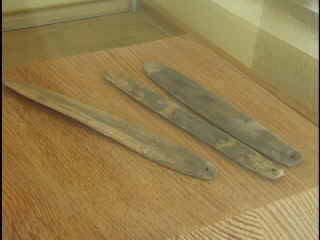 3e |
Plate 4: Archaeology
| Very little archaeological field work has been done in the Guaycuran territory embraced by Los Dolores and San Luis Gonzaga..1 But it is still worthwhile to try to sketch the archaeology, or better, the archaeological potential of this area.
William Massey Starting in the 1940s William Massey was the first of the modern archaeologists to do extensive work in Baja California. He is especially known for his excavation of burial caves in the Cape region, which yielded a number of secondary burials, that is, wrapped bundles of bones from which the flesh had decayed or had been removed. This work allowed him to describe what he called a Las Palmas culture. While the focus of Massey’s work was south of La Paz, and in the Comondú region, he did some survey work in the Guaycura nation, apparently as he traveled through the area, for the sites he described are near where the road was in those times. He describes four sites on the west coast: an extensive shell midden at Arroyo Conejo (Baja California, or BC 68); a coastal site 10 miles to the north (BC 88); and two sites in the Magdalena Bay area in the Llanos, or Plains, of Hiray. He summarized this work as follows: "In this land, held in the historic period by the Guaicurá Indians, coastal sites are numerous and frequently large. To judge from a cursory survey of the inner edge of the plains, there are many surface sites located along arroyo banks and near permanent sources of water. Caves with unpainted human bones are reported from the Sierra de la Giganta in this area. "Important among the coastal sites is BC 68, which is situated on a bluff on the north side of the Arroyo Conejo. The diameter of the site is about 300 feet; in depth it may run to ten feet, although no test has been made. Surface material perhaps represents the historic Guaicura. It includes the long stemmed projectile points which had been found in the La Paz region. Scrapers of the plano-convex keeled type were found along with flake knives, blades, and choppers. Milling and hand stones were found, but in the main the artifacts are from a skilled flake-using people. "In the sand dunes which edge the Llanos de Hiray, there are many sites which bear carefully made thin basin metates of lava, projectile points, and some potsherds possibly reflecting the mission period."2 Elsewhere he writes of the Arroyo Conejo site: "In test excavation subsequent to writing this dissertation it was found that the surface lithic complex which is Amargosa in tenor is strictly limited to the upper six inches of a site over six feet in depth."3 The word Amargosa here refers to the ancient Amargosa cultural complex of the desert regions of the Colorado River. In fact Massey often refers to the old cultures of Arizona and California, for he felt that the stone artifacts he was finding in Baja California were inspired, for the most part, by these desert regions north of the border. The fact that Amargosa-inspired artifacts were confined to the top six inches of Site BC68, as well as Massey’s work around La Paz Bay and the lack of projectile points he found south of Santiago led him to write: "It appears likely that the Pericu of the historical period may have been the descendants of groups of shell-gathering and fishing people who found their way into the peninsula at an early date."4 What he seems to be implying is that the deeper levels of the BC 68 site could be linked these early shell-fish gathering people. This is an intriguing possibility because we have already seen how there appear to be people living on the West coast who are distinct from the Guaycura of San Luis and Los Dolores, and Baegert leaves the impression that these people were the fishermen of the area, venturing out on their rafts to spear fish and turtles. In 1969 Makoto Kowta submitted a report to the National Science Foundation called "An Archaeological Survey in the Region of La Paz Bay, Baja California, and Problems of Guaicurian Prehistory." He had recorded 76 sites ranging from temporary camps to possible quarry sites, and collected 922 artifacts. Among these sites were 19 west and/or north of La Paz. The ones closest to the land of the Guaycuras included Massey’s BC68 and others in the vicinity, and a cluster of sites further north in the El Cien area. We will look at Massey’s survey work further in a moment in connection with the projectile points he found there, but it is likely that this area is rich in archaeological sites. Ralph Hancock, a Baja traveler of the middle of the 20th, reported, for example, a large shell midden on Magdalena Bay which he dug into without finding any artifacts.5 Local fishermen pointed out a site to me near El Estero on the Pacific coast roughly 20 miles north of El Conejo which, like the site mentioned by Massey, appeared to have pottery fragments mixed in it. I also saw two inland sites on the Llanos de Hiray on the edge of two very small dry lakes, one of which contained part of a metate made of some sort of volcanic material, a metate that differed from the common oval basin type found in the sierras to the east. See Plate 2e. The rapid depopulation of this area at the time of the closing of the missions, a lack of interest on the part of the early rancheros, and the rugged remoteness of the country have combined to leave us with a number of largely intact rock shelters. They are frequently carpeted with deep layers of ashes, and often contain manos and metates, and occasionally fragments of bone, fiber, carrizo, shell, etc.6 As Baegert noted, these shelters are not to be found everywhere, and he claimed they were only used sporadically. They range in size from 2-3 meters in length, height and depth to magnificent shelters of 10 or more meters in each direction.7 A man who had grown up in La Pasión area recalled how men searching for fertilizer in the caves had found a cradle made out of fiber, as well as a basket with seeds in it. There was also a cave into the ceiling of which Indians had apparently shot arrows. At one ranch he saw a goat wearing a bell with an inscription in Latin, and the date 1785.
The Religion of the Guaycuras We are lucky to have the detailed picture of the Guaycuras that Baegert left us, but unfortunately his knowledge did not extend to their inner world, and so it is worthwhile to try to breathe some life into the little data we have by looking at their religious beliefs and their major artifacts. Our primary sources are the works of Baegert and Hostell who, unfortunately, left us very little about the actual beliefs of the Guaycura. We may recall Baegert’s remarks about how humans arose from the mating of Emma, the devil, and a bird which had been a woman, and how stones and animals had once been human. Fortunately we have a report of Venegas on the beliefs of the Monquí, and we have some grounds to believe that their more southerly cousins shared the same sort of religious world view.8 Gumongo, the chief spirit, lived in the north from whence he sent sicknesses, but he also sent Guyiagui who seeded the earth with pitahayas, and opened up esteros, that is, bodies of water behind the beaches, along the Gulf coast as far south as a big rock in Puerto Escondido where he dwelled for a time. Other spirits brought him pitahayas and fish, and he continued this work of bringing pitahayas and forming esteros. Guyiagui also made garments for the shamans who were called dicuinoches from the hair they offered to him, and he left them a painted tablet to use during their fiestas and ceremonies. These shamans say that the sun and moon and the bright stars are men and women who fall into the sea in the west and must swim to the east to emerge again. The other stars were lit by Guyiagui and they are extinguished in the water of the sea, but they reignite the next day in the east. If we add to the hair capes and tablas, or tablets, of this passage wands, pipes and dart throwers, we are faced with a list of fascinating objects to examine.
Wands Hostell described, as we saw, wands among the shamans’ implements which had figures carved on their tips in the form of savage, or bearded men, and were called Tiyeicha, or "He who talks," which certainly seem akin to the sticks with hair we just saw. Aschmann describes a wand from an accidental find which included wooden tablets, as well like this: "From the same source Massey also obtained a finely polished hardwood staff or wand about 10 inches long. It is decorated with bands of colored beads and incisions. The archeological occurrence of one of these wands, roughly in the territory served by Mission San Luis Gonzaga and well south of the Central Desert, supports Father Burrus’ identification of both wands (Stäblein) and tablets among the Guaicura in Hostell’s letter of 1750. The extant wand does not, however, have a head carved on its end as described by Hostell."9 And Massey found as grave goods small pieces of wood with shark teeth attached to them which may, in fact, served as some kind of wands.10 These wands may have remote parallels with the spirit sticks reported by Ritter,11 and more proximate links with the report of Taraval which we saw before concerning the equipment of a woman shaman which "included sticks whose points were carved to represent faces with prominent noses." The Jesuit missionary Ignacio María Nápoli who worked among the Cora encountered a shaman with a large mustache,12 and he, himself, was considered a shaman because he had a long beard.13 Jaime Bravo also encountered a shaman with a wand decorated with feathers and 4 small pearls. He also wore on his belt deer hooves, pieces of mother of pearl, small shells and palm fruits that rattled.14 These various indications, i.e., bearded men and prominent noses, when seen against Baegert’s remark that the Guaycura were beardless, points not only to facial hair being a potent quality of a shaman, but contains, perhaps, a veiled hint to some distant contact with bearded and big-nosed strangers. Aschmann also notes the presence of idols among the Cochimí including one having a trident in one hand and a snake in the other, but there are no reports of idols among the Guaycura.15
Pipes The anonymous Jesuit missionary who left us A Description of California writes: "From south to north an instrument called the Chaqueco was universal among the Indians. It was used to smoke the wild tobacco which occurs there. These instruments consist of a tube, more or less long, made of pierced stone. (In the vicinity of the Rio Colorado they are made out of clay.) Near the middle of the tube there is an interior division where a pebble is fixed; it is of irregular shape to permit passage of air and smoke. The lower half of the pipe is filled with wild tobacco and it is ignited with a live coal. Although the instrument is the property of a shaman, during certain of their festivals it is common for one of them to be passed from hand to hand so that all in attendance might become intoxicated."16 Aschmann, again summarizing the ethnological literature, mentions the existence of reed or cane pipes, and notes the implied importance of stone pipes since "scores and probably hundreds of hours must have been required to drill" them.17 Massey, describing a collection of 22 biconically drilled stone pipes, i.e., pipes drilled from both sides, found in the Mulegé area, said that most of them were made of sandstone, some of volcanic material, and one of steatite. He classified them as a short, thick type, (the majority) and a long, thin one.18 In Plate 3: 1b, 1c and 1d we see three pipes from the Guaycura nation. The shape of 1c makes it appear that it would be hard to smoke, and perhaps it was used in some sort of curing ceremony akin to the shaman’s tubes Baegert describes. Similar pipes of volcanic material, have been found in the Great Basin area of the U.S.19
Tablas Various forms of wooden tablets which had religious significance have been reported throughout the peninsula. They, however, took different forms and may have served different purposes.20 Aschmann sums up the early literature, and notes how much effort was necessary to plane a log into a plank using stone tools.21 Venegas describes the use of these tablas: "In attesting to their authority, they (the shamans) some times said that they were those same spirits in which they believed; others, that they had been to the sky and talked with their gods, and for proof they showed a fresh nose-worm of deer or a bit of pelt, and a small plant, with which they said they could kill whomever they wished. But most usual was to have in their hands some little boards, made with much effort because of the lack of iron tools, of the heart of the mesquite or of another tree that is called uña de gato (cat’s claw), on which they have painted absurd figures, that they said copied authentically the Tabla, which the visitant Spirit left them when they went to the sky; and these same are those that shamans of Loreto taught in their secret school for the children." Lee Gooding Massey commenting on this passage says that this took place at Conchó, i.e. Loreto, and "Shamans are said to have withdrawn with the children to caves and other secluded places in this region for the teaching of "doctrines and some other useless stupidities," which included the forming of figures on tablas."22 Luis Sales also describes the kind of ceremonies in which these tablas were used among the tribes to the north. The celebrations were ordinarily held at the time of the seed harvest, and always when the moon was full, and they included feasting, dancing, races, sexual activity, and the oration of a shaman which lasted three or four hours. A special hut had been built for him which was taboo to women. The actual ceremony took place at night at a pole in a clearing lit by campfires, and the naked men were painted with colors, and the women, as well, and both wore bird feathers on their heads. The shaman wears "a sort of rain cape of dead men’s hair… He speaks to them of the ancient customs, gets involved in a thousand contradictions, gives an account of all his accomplishments, cures, killings and abilities, and assures them that he is on friendly terms with the dead, and then he produces some tablets painted with a thousand ridiculous figures which represent the most able men they have had, the best curanderos (quack doctors), the bravest, the best runners and the strongest, and from these alone he builds up an outstanding elogium, but he always adds that he is greater than all the rest. "Besides these tablets there are others which are about a vara long and half as wide. In the middle there is a hole and from time to time he thrusts his tongue in and out of it and they all laugh unrestrainedly."23 Lee Gooding Massey reported on three tablas found in the early 1960s near La Puríssima by a rancher and his two companions in a cave where they had taken refuge during a rain storm. Unfortunately, two of the tablas provided firewood, but the third was brought to the Anthropological Museum in La Paz. This tabla was 1.45 meters long and varied between 6 cm. and 12.5 cm. in width and had a number of holes drilled in it. Massey points out the parallel description of a shaman object reported by Taraval: "a stick with holes so it could be entirely covered with feathers," though stick and tabla may have meant different things.24
La Pasión Placa Hostell’s report of tablas, as we have just seen, does not match that of tablas found elsewhere. He wrote from the La Pasión area: "Among their most solemn days of celebration is that on which they pierce the extremities of their children’s ears and noses. After having their sons and daughters prepare themselves for this event through three days of fasting, on the fourth they all gather, especially their conjurers who convene in large numbers, all attired in capes woven from human hair. They carry in their hands the aforementioned wands, also the small tablets into which they have scratched some rude figure with a sharpened stone, used instead of a chisel or knife. Such figures have no idolatrous or superstitious meaning. They adorn themselves in the finery mentioned, but which as Christians they completely put aside and also throw away without reluctance their wands and tablets."25 In the winter of 2000 my wife and I visited a cave in the vicinity of La Pasión guided by a rancher on whose land it was. He told us that sometime before he had guided another person to that cave, and they had found a "placa," a wooden tablet, made, he thought, of mesquite or oak that had been resting high on the cave wall. It was approximately 25 cm. long, and 17 cm. wide, and was incised with figures, but had no holes in it. Unfortunately the placa was removed by the person who was with him, and I have not yet been able to trace it.26
The Cave of the Initiations We have just seen how Hostell, writing from La Pasión, described the Guaycuran adolescent initiation ceremonies, and this account can recall the remarks of Venegas about the Loreto area shamans. In the sierra of Guadalupe Harry Crosby visited Agua Hondo cave,27 the walls of which were covered with drillings, and San Javier cave in which they were covered with vulva symbols.28 Everado Garduño suggests that drilled holes are associated with initiation sites.29 My wife and I, guided by another local rancher, visited another cave that appeared to be a good candidate for an initiation cave of the Guaycuras or their predecessors. It contains numerous drillings, as well as one vulva symbol. See Plate 3: 1e. This cave can be compared to two other sites in the same area with similar wall engravings. See Plate 3: 2e and 3e. While it may differ in some particulars from the initiation rites of the Guaycura, the account of an anonymous Jesuit missionary is worth recounting: "When boys have just grown up, in order that they may be declared men, they pierce their ears and noses; the latter are pierced in the cartilaginous nasal septum between the two nostrils. And at this time the shaman takes charge of the boys and keeps them separated from the rest of the people, having them go for several days without eating or drinking (It is to be believed, however, that they are secretly given a little water on occasion if they wish it.) It is said that this fast is to prevent the boys from becoming big eaters; they are made to suffer hunger and thirst for this reason and in order that they not become idle talkers, shameless persons, nor impudent in answering their elders. Similar treatment is given to women on the occasion of their first menstrual flow; a girl is taken to a secluded spot and rests all day, without eating or drinking. The next day they make a fire, and on it they throw many branches and the trunk of a certain tree which they hold to have medicinal properties. This makes the fire smoke a good deal, although its smoke is not particularly pleasant. A man carries the young girl and places her on top of the smoking pile of branches. After she has been thoroughly smoked she is returned to the place of seclusion where she had been. There they force her to remain several days, eating or drinking nothing or very little. In the afternoons the women take her out and have her run certain courses through the fields and then return her to rest at her place of seclusion; they sing certain songs, in accordance with their custom, to her during the nights. The man who has served as her godfather to carry her to and from the smoke, also undertakes a great run, that is until he comes to a neighboring ranchería; he advises them of the memorable occasion and how happy they are that now they have another woman. All these ceremonies are carried out under the directions of the shaman; it is he who orders what is to be done and what is not to be done."30 In the initiation ceremonies of the Kiliwa Indians, the boys’ noses were pierced, "so that rattlesnakes would not bite, and also to make the nose long, narrow and beautiful instead of wide."31
Burials El Conchalito, located right on the bay in the city of La Paz, can be ranked as Baja California Sur’s most intensely excavated archaeological site. Alfonso Rosales-López and Harumi Fujita in their La antigua California prehispánica: la vida costera en El Conchalito report on the burials uncovered there. Their own excavation yielded 14, in addition to 4 previous ones, and there are no doubt more burials in the same area. There are, no doubt, more burials in the same area which are gradually being uncovered by the erosion of the shoreline. In March of 2002, for example, two more burials were uncovered. See Plate 4: 2a. There are both primary and secondary burials, as well as sectioned burials in which the skeletons have been divided at the base of the spine, and sometimes the lower half of the body has been placed next to the skull. Two stages of human habitation were uncovered. The first was a hunting culture from 300 B.C. to 800 A.D., and later, when the bay was yielding more shellfish, a shellfish-collecting culture developed from 800 A.D. to historic times. The authors discuss the possible relationship between these burials and the Las Palmas burials which have been dated from 1200 A.D. to historic times.32 It is in the context of these burials and the Las Palmas secondary burials that we can look again at Baegert’s remarks about burial practices among the Guaycura. He told us that he heard that they break the spines of the dead and roll them into a ball. He feels that they are in haste to bury those who are dead, and have prepared the grave beforehand, and he fears they have in this way buried some people alive. The person being buried is wrapped up, in one case, in a deerskin. What we might be seeing here is a reflection of the earlier burial practices of the peninsula which have filtered down poorly to Baegert, or even may have become somewhat fragmented among the Guaycura. It is conceivable that the spine was broken either to liberate the soul of the dead person, or to prevent it from returning. In any event, it was probably the shamans who had the job of not only leading the mourning for the dead, but supervising the burial, and later the reburial of the bones. A burial was recently discovered in a small cave not far from the La Pasión area, which may have been that of a shaman, for the body appears to have been buried with various grave goods. It is yet to have been professionally studied, and it has been tentatively dated to around 1200 A.D. See Plate 3: 2b.
Hair Capes We know from the reports of the missionaries of the Guaycura nation that its shamans had capes, or mantles, made from the hair offerings of their followers given at the time of mourning, and that they wore these capes during ceremonies. This was a practice that is attested to in other parts of the peninsula. Indeed, Homer Aschmann, a pioneering archaeologist of the central Baja Californian desert, calls it "perhaps the most distinctive culture trait of the Indians of Baja California,"33 and tells us that it is unknown north of the border even among the Yuman-speaking tribes. "It is hard to imagine so complex and emotionally charged a culture trait originating among the relatively impoverished tribes of the peninsula and spreading to all of them, but not going beyond their territory. A more likely possibility is that it represents an ancient religious practice, surviving in full vigor in a culturally isolated region long after it had disappeared elsewhere."34 He goes on to tell us that the hair came from the dead, as well as the living, at times of curing or initiations, and the shaman jealously guarded his cape, and augmented its size in order to show his power. The missionaries, understanding the religious importance of these objects, burned them. One hair cape from Bahía de los Angeles - far to the north of the historic Guaycuran territory, but conceivably a place where they once lived - survived and was collected by Edward Palmer in 1887, and later reported on by Massey and Osborne who describe its construction, which probably included shell beads.35 See Plate 3: 2d. Luis Sales, the Dominican missionary, describes the use of these capes in the far north of the peninsula. "When all are gathered, ornamented with charcoal and yellow, the old man places himself in the center of the circle. Under his arm he has a doubled mat of rushes in which he hides the rain cape for the fiesta. On another little stick he has the hair of the dead man suspended. He indicates silence, puts on the rain cape of the hair of the dead, and causes as much horror as when a bear appears. He plays a whistle and tells them that the dead man is coming; but, however much they look, they do not see him coming. Nevertheless they believe it. Then he shows them the little stick with the hair of the dead man, and tells them that he is there, that they see him - and they see nothing. However they give cries, they pull their hair, and make other ridiculous actions. Finally, relieved by crying, the old man comforts them. He puts a thousand questions to the head of hair, and he himself answers them to his liking."36
The Inner World of the Guaycuras It is worthwhile to try to penetrate into the inner religious world of the Guaycuras even if it must remain a very tentative venture. The shaman played a central role because he was the one who could travel back and forth between the world of men and the world of the gods and the dead. And this was a matter of the greatest importance to the whole band, for it was from the other world that the blessing of the pitahayas and success in hunting came. And on the negative side, illnesses were intimately bound up with that world, for Gumongo lives in the north, and sends sicknesses, as well as Guyiagui, the pitahaya bearer who is associated with the big rock at Puerto Escondido, and perhaps the rock from which the San Luis Indians felt they were descended. The Guaycuran shaman retires into a cave and speaks to Emma. The shaman is the diagnostician of illnesses in order to discover what spiritual wrong, or evil shaman, has caused them, and where the sick person’s soul has gone so it can be retrieved and restored to him. The shaman makes use of a tube, or perhaps a pipe, to remove the harmful object that is causing the illness, and this does not necessarily that the Indians believed that the object the shaman showed them had actually been lodged in the body of the sick person. At a more sophisticated level they may have believed that the evil spirit, or humor, had been enticed from the sick person into this object. The shaman blowing and sucking through the tube can be seen as a symbolic representation of altering the spiritual condition of the sick person, and thus restoring him to health, and the smoke of the pipe both intoxicates and rises to the heavens. The shaman, himself, travels to the heavens and communicates with the gods and with the dead, and may even have collected his generous rations of food with the idea of bringing succor to the dead person. But the shaman may have not only aided the dead person, but protected the living from him by his supervision of the burial and his careful arrangement of the bones. Perhaps the sectioning of the spine played a role in assuring the world of men that the spirit of the dead person would not come back to bother them. So the shaman must assure the material and spiritual well-being of the band, aid the sick, and be a guide to the dead, and for all this he needs power and its implements. Somehow he must be able to make the sacred journeys. The pole in the middle of the circle in Sales’ description of the fiesta is a wide-spread symbol of these kinds of journeys, for it is rooted in the world below, the earth that we live on, and the heavens above, and it represents the means by which the shaman ascends and descends. Elsewhere the same archetype shows itself as a tent pole, sacred tree, or mountain. We have seen how among the Guaycuran shamans hair capes played a central role. But why? The hair came from the dead, and from mourners, and thus was a symbol of the world of the spirits and its spiritual power which the shaman literally put on. He accumulated this power bit by bit, and guarded it jealously. Indeed, the cape was made by Guyiagui, and thus shared in his power. Facial hair, itself, perhaps because of this, as well as its rarity, became a sign of the shaman. The shaman also carried a wand as a sign of his power, and like the pole, it connected earth with the heavens and acted like the very mouthpiece of the spiritual world. Among the Yumans to the north, it was topped with hair, and among the Guaycura it was carved with the likeness of a bearded man and called "He who speaks." The wand that Jaime Bravo described was decorated with feathers. Among the Paviotso Indians far to the north the shamans had three to four foot willow rods with eagle feathers tied to the top of them. They were placed upright beside a patient’s head, and some of the shamans said that this eagle feather stick had given them the curing songs they employed.37 The wand, therefore, is the messenger of the gods, perhaps something like Mercury of the Greeks, and here we can recall the idol found among the Cochimí with a snake in one hand and a trident in the other, and the stick with holes in it for attaching feathers reported on by Taraval, and even the custom the Guaycura had of giving feathers as a peace offering. At the time of initiation the boys and girls cannot become adults without learning how to suffer pain and deprivation without complaint. And they must learn something of the spiritual geography of the tribe, as well. Their ears and noses are pierced, perhaps to represent the transformation of their ordinary senses into spiritual organs of perception, and central to these initiation rites are the tablets which appear not only to embody something of the history of the most significant members of the tribe, the ones who carried power, but are engraved with a sacred writing that came from the gods so that the tablets of the shamans are copies of the archetypal tabla of Guyiagui. The tablets, like the wands, then speak of the spiritual world, and in the school of initiation the young people through the tablets learn something of that spiritual world. It is also possible that ceremonial blades like the one found at El Conchalito, or the crystal point that we shall see shortly, were also ritual objects of power. After I wrote these lines, I came across an account of what were perhaps the last vestiges of the ancient hair cape tradition which we can compare to this reconstruction of the inner life of the Guaycuras. Peveril Meigs, working among the Kiliwa Indians of northern Baja California, collected "fragmentary but vivid recollections" some 36 years after the fact of their use of hair capes, or pachugós in the ñiwey, or talking with the dead ceremony, which had last been held in 1893.38 Meigs went with a very apprehensive Kiliwa informant to the cave where the capes were stored, and took a photo of them wrapped in a reed mat, and had the impression of "somewhat wavy hair." 39 The ceremony was held so that the dead would stay away. It called for elaborate preparations and the construction of a long, low rectangular ramada whose posts were painted black, white and red, and in the middle of which was a big painted post. The low height prevented the sun from hitting the hair capes. These capes were composed of nets of mescal fiber to which tufts of long, black human hair were attached. The capes, wrapped in reed matting, had been hidden on a rack in a cave. They were said to be made at the beginning of the world with the hair of virgins who had died. The four shaman hills that held up the sky threw shooting stars at the capes so that if someone disturbed them, and was hit by a star, he would die within a year. The capes covered their wearers from head to foot, and on the top of the head was a bunch of eagle feathers. In the ñiwey ceremony the hair-caped men advanced towards the ramada in single file, jumping from side to side, to avoid the shooting stars while blowing carriso whistles. Behind them came a man whirling a bull roarer, and boys picking up any hairs that had fallen from the capes so that they could be reattached to them. The robed men entered the hut except for the last of them who ran around the hut for half an hour. The capes were taken off and put on low, horizontal frames and covered with mats. The eagle feathers were attached to wands a yard long and stuck in the ground behind the capes. This is where the dead would sit, and food was offered to them. There was also a two-foot high figure carved out of wood. The shaman held in his left hand a two-foot long stick set in the ground in front of him, and in his right, a turtle shell rattle which he beat against it. He communed with the turtle in various ways, and went off to seek the dead. They entered the hut and turned to the left, went to where the shaman was sitting, and one of them entered his body. And when someone put a pipe in the shaman’s mouth, the dead person spoke in a strange tongue. If he had hidden anything – things which need to be found so the dead person could go away – he told where they were. The dead person could also speak of illness, or the person responsible for his or her death. In this fascinating account which stands in strong contrast to the derogatory one of Sales, we can sense something of the inner cosmology of the Kiliwa, and by inference, that of the Guaycuras. The hair capes, themselves, with their feathers like the posts, and especially the central post of the ramada, are bridges between the worlds of the living and the dead. The capes must be safe-guarded from the sun, and perhaps from touching the earth, as well. They belong to the realm of darkness, and their very use is fraught with danger. Here we see the capes, the wands and feathers, and even the pipes, as well the whistles and bull roarers, come together, and most of these objects except for the bull roarers existed among the Guaycuras, as well. And as far as the bull roarers are concerned, while there is no direct evidence, objects which appear to be bull roarers are in the regional INAH museum at Ciudad Constitución. See Plate 4: 3e.
The Origins of the Baja California Hair Cape Shamanism As we saw Homer Aschmann pointing out before, it is unlikely that the hair capes were an indigenous development, and it is more probable that they were the remnants of an ancient shamanistic tradition that was once much more wide-spread, and was preserved here in Baja California long after it has disappeared elsewhere. Peveril Meigs who had taken what he had thought to be the only photograph of a hair cape in 1929, was later surprised to see a picture of a similar cape found among the western Déné in the mountainous interior of British Columbia that had been published by the well-known missionary, A.C. Morice in 1892. While Venegas had described the capes of Baja California as capped by hawk feathers, or the tail of a deer, those of the Déné were topped with sea lion whiskers, and a cap "formed by three rows of dentalium shells hung by strips of caribou skin in bunches of four," and artificially curled hair hung from the cap. The Déné had gotten the shells and sea lion bristles from trade with the coastal tribes. Meigs concluded about the existence of similar capes in Baja California and British Columbia: "The human hair capes must have diffused from a common origin."40 From here on the story gets much more fragmentary and problematical, but intriguing nonetheless. In 1938, Thor Heyerdahl and his wife were back in Norway, having given up their attempt to leave the civilized world behind by living on Fatu Hiva in the Marquesas Islands. Thor gave a radio talk on the petroglyphs he had discovered in Fatu Hiva, a talk that was heard by the brother of one of his neighbors. This man had lived for many years among the Indians of the Bella Coola valley of coastal British Columbia, and he had seen similar petroglyphs. The two men were further surprised at the similarities in appearance and in artifacts between the Polynesians and the Indians in British Columbia.41 Before long the Heyerdahls and their newborn son were on their way to explore the Bella Coola valley and these similarities, which had been, in fact, observed back to the time of Captain Cook. The ideas generated in this way were to become part of Heyerdahl’s larger hypothesis of the populating of Polynesia from South American, and from Indonesia via the Philippine and Japanese currents carrying seafarers to the Pacific Northwest, and then later down to Hawaii and the other islands. 42 At first glance this appears to have little to do with our story, but while Heyerdahl was wandering around the Bella Coola valley and wondering what had happened to the Kwakiutl Indians who had once lived there, he also had in his possession a hair cape that he had acquired in the Marquesas Islands and later sold to the Brooklyn Museum. So the Marquesas Islands becomes the third place in which we find hair capes. It is entirely possible that the hair capes of the Marquesas could have developed separately, and even – although less likely – that the appearance of these capes both in Baja California and among the Déné was purely coincidental. Heyerdahl’s basic theory of a western flow of people to Polynesia has not been upheld by the bulk of subsequent arachaeological and genetic work, which indicates that the islands were populated from the west. It does, however, remain possible that there was some flow in the other direction, as well. So let’s try to advance in this very speculative direction. In November 1996 the National Geographic magazine published a picture which had not been used in its issue of October 1919 of a "Marquesas chief, in a cape of hair taken from enemy dead and his companions." Human hair ornaments, including tufts of white beard with occasional permanent waving put in the hair, was found among the Marquesans. It took the form of tufts of hair decorating conch trumpets43 necklaces, wrist and ankle bands, waist and shoulder ornaments, etc., as well as the hair capes. 44 This more general ceremonial use of hair does not seem to have a parallel among the Baja Californians, and I have no idea whether the Marquesans used their hair capes in ceremonies connected with talking to the dead. Among the coastal Salish Indians of British Columbia who intruded into the Bella Coola valley and may have displaced the Kwakiutls is to be found a spirit dance headdress made of human hair. 45 It would take a considerable leap of imagination, however, to tie all these appearances of hair capes together. If we did take that leap, it would go something like this: The Philippine and Japanese currents sweep Asian seafarers with a shamanistic tradition of hair capes to the Pacific Northwest where they settle for a time and become the Kwakiutl of the Bella Coola valley. Later when the Salish intrude, the Kwakiutl depart in two directions. Some go inland, and so the hair capes are to be found among the western Déné. Some sail down to Hawaii and make their way to the Marquesas Islands. The same currents that had washed them up on the Pacific Northwest shores sweep down along the coast of Baja California. Captain C.M. Scammon, for example, discovered in 1853 the wreck of a Japanese junk near Cedros Island, while in 1856 Captain Jno. C. Lawton in the brig Prince de Joinville saw a Japanese junk near Magdalena Bay. 46 These are some of the same currents that were to be utilized by the Manila galleons. In any event, by sea or by land, hair capes made their way down from the north to Baja California. Ten Kate and Paul Rivet, as we saw, thought that these skulls resembled those of Melanesia and the Lagoa-Santa people. Gill et al., for example, described discrete osteological traits found both in Peru and Easter Island, and "their data imply that Polynesians from the Marquesas Islands arrived on the northwestern coast of Peru in prehistoric times," and on their way home ended up in Easter Island.47 How likely is this kind of scenario? Not very likely. More reasonable is the hypothesis that an early wave of dolichocephalic, or long-headed people, had proceeded out of Asia both into Melanesia to the south, and by land or by sea to North America, and remnants of their genes and culture are to be found among the earliest inhabitants of Baja California, and perhaps other parts of North and South America.
Guaycuran Origins A certain amount of work has been done trying to connect the cultures of Baja California with the cultural complexes found further north. Massey, for example, summarizes the matter like this: The San Dieguito complex (Playa complex) and the La Jolla complex appear to relate mostly to northern Baja California. But some projectile points of the last San Dieguito (Playa II) type are to be found in the Castaldí collection of artifacts from central and southern California.48 The Pinto Basin complex (Amargosa I) and the Gypsum Cave complex (Amargosa II) have stronger ties with southern Baja California. Pinto Basin projectile points make up 13% of the Castaldí collection, and are most frequent in the Magdalena Bay area, and around La Paz Bay. A variant of the Gypsum Cave type points (La Paz points, Loreto blades,) "are more finely flaked with a good deal of pressure retouching, especially on the stem. Edges frequently are beveled."49 Massey also describes different Baja California cultural complexes: a Las Palmas culture whose burial caves he excavated in the Cape area, and felt extended throughout the Cape region and the Gulf islands. This culture, he felt, might have had connections with the Pinto-Gypsum complex. "Its known representation is clearly that of the Guaicurian-speaking cape people (Huchiti-Pericú). The unusual artifact inventory of both the historic tribes and the Las Palmas culture (such as dart-throwers, absence of basketry, lack of fishing equipment), coupled with the famous dolichocranic physical type, forces the conclusion that this is a relic of an ancient past in western North America."50 He also described a peninsular Yuman, or Comondú culture, which appears unrelated to the Pinto-Gypsum, but connected to the historic Cochimí, and was to be distinguished from a California Yuman culture further north. He summarized his findings for the southern most part of the peninsula: "Most definite evidence for cultural connections between the Cape Region and northern areas can be found in the lithic complex of the open sites. With the exception of several ground stone artifacts, all of the stone projectile points, scrapers, flake knives, and grinding tools find identity or close analogy in the prehistoric cultures of southern California and adjoining southern Arizona… Baja California received very strong influences from peoples responsible for the Amargosa II complex in southern California."51 Given these connections and the geography of the peninsula, he considered, and reasonably so, that the main avenue for the populating of the peninsula, and the cultural influence upon it came by land from the north, and more particularly, from the desert cultures in eastern California and Arizona. In such a schema, the oldest cultures would be found the farthest south. But he did not rule out other possibilities. For example, the secondary burial customs that he found in the Las Palmas culture, he surmised, could have come from the south instead of the north. Alternative theories for the origins of the Guaycura have also been proposed. A.L. Kroeber found that the Seri Indians on the mainland and Gulf islands showed a greater cultural relationship with the Guaycura than the Cochimí who lived opposite them in Baja California. He hypothesized that the Seri could have come to Sonora from Baja California by way of the Gulf islands of Tiburón, San Esteban and San Lorenzo when the Guaycura lived further north. Donald Tuohy notes a later study of Seri basketry, as well as a linguistic one, supporting Kroeber’s hypothesis.52 Seri, in fact, is part of the Hokantecan language family. Massey also notes evidence of trade found in the Palmer collection between Bahía de Los Angeles and the Mexican mainland.53 Interestingly, while balsas and double-bladed paddles are known on the Gulf coast of the peninsula, it is only among the Seri they are found on the mainland, and the Seri are known to have crossed the Gulf in historic times in primitive canoes and have landed at Conception Bay.54 Makoto Kowta created an intriguing, and even more far-ranging hypothesis in which he imagines that: "For some time before 2000 B.C., the southern part of Baja California was occupied by Hokaltecan-speaking peoples whose cultural ties were stronger with complexes of mainland Mexico than with those of the southern California deserts."55 The evidence he marshals for this theory comes from different directions. He reasoned that if the Cochimí language had separated from the Yuman in ancient times, then the Guaycuran language must be older. In support of this, he draws on the studies of Gursky and Swadesh that we saw before. And he finds that three of the distinctive characteristics of the culture of the southern part of the peninsula, the early form of atlatl, netting with a lark’s head knot, and one rod basketry, all find their parallels on the Mexican mainland. An early form of atlatl, for example, was found in Frightful Cave in Coahuila. He also suggests that the Loreto blades and La Paz points which don’t find close parallels to the north and which Massey felt might be local manifestations of Gypsum Cave projectile points may, in fact, find closer parallels on the mainland, and more specifically, to the "Coxcatlan Complex of the Tehuacan Valley in the State of Puebla in Mexico,"56 which dates from around 5,000 to 3,500 B.C. This kind of reasoning left him with the problem of how these distant mainland cultures could be related to the Guaycura in Baja California. He suggests that the intrusion of the Uto-Aztecan speakers sometime before 2,000 B.C. created the separation between the Hokaltecan-speakers on the mainland and in Baja California. As the techniques of the scientists grow more refined, we can expect that they will be increasingly applied to the prehistory of Baja California. In the field of linguistics the work of Gursky and Swadesh could be developed, perhaps by a deeper analysis of the structure of the Guaycuran language, to try to determine more exactly just when the Guaycuras arrived in the peninsula and from where. There is also, as we saw, a considerable linguistic diversity within the Guaycuran language which, if it developed in Baja California, argues for considerable antiquity to their presence there. This, too, could be the subject of further study. The origin of the Guaycuras could also be examined from the perspective of mitochondrial DNA. Are the Guaycuras, for example, genetically distinct from the Pericú, or from the Las Palmas culture, or from the inhabitants of El Conchalito? Are they, indeed, related to the Seri or other peoples on the mainland of Mexico and beyond? A more elaborate analysis of skeletal material would augment this genetic analysis. From the time of Herman ten Kate, anthropologists, as we saw, have noted the long, narrow skulls of the inhabitants of the southern part of the peninsula, a pattern which appears to hold true for the Las Palmas, La Matancita and El Conchalito material.57 Increasing evidence points to one or more waves of immigrants arriving in the Americas whose skulls differ markedly from those of modern native North Americans.58 Do the skulls of the early Baja Californians of the southern part of the peninsula show a relationship to these early immigrants, and thus confirm the possibility that what we have there is a remnant of ancient America? If this were so, we return to the idea that Polynesians, while they could have had some direct contact with South America, descended more likely from the same ancestral groups that gave rise to these early Americans which would explain the similarity in skulls. Further, this would also explain why skeletal material coming, for example, from the Great Basin area, could resemble that of Baja California.59 Recently, Sylvia Gonzalez and her collaborators at INAH in Mexico City have dated a long, thin woman’s skull, known as the Peñon III Woman, which was found in the Teotihuacán valley in the Mexico City area to 12,700 years ago, and plan to compare its DNA to that of the Pericú.60 A more intensive study of the origins of distinctive Baja California cultural traits could also be carried out. What can we make, for example, of the absence of dogs or the lack of use of salt, not to mention the tablets and hair capes?61 It is not likely that such distinctive objects and traits, or their absence, developed locally in Baja California.
Ancient Shamanism in Baja California Hair capes could very well be an aspect of a larger and ancient shamanistic tradition that flourished in parts of Baja California for thousands of years. Meigs, for example, suggests that some of the figures in the rock paintings of the Sierra de San Francisco might well be wearing hair capes. This magnificent art has been dated to as old as 7,500 years ago, 62 and in what is one of the most fascinating developments in Baja California archaeology, headway is being made in understanding the meaning of these murals. It is worth a digression, then, to look at this development, for although this art does not seem to extend south of the Sierra de Guadalupe, our attempts at understanding it will allow us to see how Guaycura shamanism may have been derived from a much older and richer tradition which by historic times could very well have faded significantly. Further, the Cochimí were emphatic that they were not the painters of this art, but it is possible that they were its descendants, or even the artists were the ancestors of the Guaycuras or Pericú who were later displaced towards the south. The methods that are being used to understand rock art around the world can be described as the ethnographic, the neuropsychological or psychotropic, and the archetypal. The ethnographic approach is precisely what the name indicates. The ethnographic literature about the people who created the art is carefully studied for clues to its interpretation. Despite how obvious this sounds, it is only in recent times that this has been systematically carried out, for instance in regard to the San, or Bushmen of southern Africa, and the Indians of the western United States. The fundamental finding of this ethnographic approach is that rock art, whether in these places or even among the Cro-Magnons of Europe is the result of the spiritual practices of shamans. These shamans entered into an altered state of consciousness by means of hallucinogenic substances, or trance inducing dances in order to make contact with a world of the spirits from which they could acquire powers to talk with the dead, as we have seen, but also cure people, make rain, discover where the game animals were, and so forth. Various caves, rock shelters, and rocks were seen as doorways to this other world, and on returning from it the shaman depicted what he or she had seen. The physical site, itself, became in this process a site of power. These shamanistic activities also embraced the initiation rights of young men and women, and other religious activities. The second method for deciphering the shaman’s art is the neuropsychological, and it is based on the premise that these altered states of consciousness unfold in certain basic stages: oral hallucinations, the alteration of bodily perceptions, visions, and disassociated states. It is visual hallucinations, naturally, that take first place in understanding the rock art. This neuropsychological model, developed by David Lewis-Williams and Thomas Dowson, in relation to San rock art and applied to western Indian art by people like David Whitley delineates seven common hallucinatory or entoptic patterns: dots and flecks, parallel lines, meandering lines, grids and checkerboards, zig-zags, and nested circles, or spirals, or concentric circles. A second component of this method looks at how these mental images are transformed during the visionary experience by means of replication, fragmentation, integration, superimposition, juxtaposition, repetition and rotation. A third component finds three stages in the development of these images. First the entoptic images appear, then realistic images, and finally, a combination of the two, e.g., the images of a grid pattern and a deer are fused into one. The entoptic patterns in themselves take on different meanings in different cultures, and it is ethnography that points to the applicable interpretation. This neuropsychological model has potential application around the world and across time because it is based on our common human physiological make-up. It is much the same case in regard to the third method, the psychological or archetypal, which points to a common psychological make-up which C.G. Jung called the collective unconscious which contains certain basic structural elements, or archetypes, that have been found to express themselves in a whole variety of different cultural settings by means of dreams, visions, myths, art work, and so forth. Jung was careful to point out, however, that the actual images that are to be found in the various cultures are not somehow stored in the depths of the psyche but, in fact, vary widely according to place and time. What is common is the underlying archetypal patterns that generate these analogous images. With these three methologies in hand, we can turn to the rock art of Baja California, and especially the great murals of the Sierra de San Francisco, and the Sierra de Guadalupe. Our starting point is the hypothesis that these remarkable paintings represent the work of shamans and their most salient features, which are the monos, or human-like figures that dominate so many of them, are representations of the shamans, themselves, in the very world of the spirits. One of the constants of the archaeology of Baja California has been that the principle flow of people or cultural traits came from the north, that is, from the western United States, and therefore it is legitimate, at least in a tentative way, to look to the rock art of that area in order to see if it sheds any light on the art that is found in these mountains of Baja California. Further, one of the most striking features of these shamans in Baja California is their posture with their arms raised up, bent at the elbows. Therefore, it is noteworthy when we read concerning some of the shamans among the Indians of the American West: "The shaman’s dance posture was arms lifted perpendicular to the body, with elbows bent at 90 degrees, exposing the shaman’s "seat of power," his right wrist, to the sun, as is sometimes shown in the art." 63 Further, the red and black colors so often used to depict the shamans of the sierras also parallels in the western United States. The art of initiated girls was often painted in red, and that of boys in black. The term "Paha" applied to some Western shamans, was also applied to the California red racer snake that had a black phase and a red one, was thought by the Indians to represent the two sexes. "The shaman/Paha, then, painted himself bilaterally black and red for rituals, thus, like the red racer, conjoining or mediating the male and female principles of the world." 64 From an archetypal point of view, the shamans thus united the feminine and masculine aspects of the psyche to represent a totality, or symbol of wholeness, or in this case, a person in contact with the two worlds: the world of ordinary reality, and the world of the spirits. Another way of looking at it is that the two colors represent both conscious and unconscious, and it is interesting to note that among the depiction of the Sierra shamans, the red almost always embraces the head as well and half of the body. The head can be taken as a universal symbol of consciousness so that the red would mean consciousness while the black would symbolize the unconscious. This kind of contrasting plays itself out in a variety of ways, though without unanimity. More often than not, the left side of the shaman is painted black, but with any number of exceptions. Sometimes the shamans are depicted with the top half of their body red and the bottom half black, not to mention times when they are completely red, or completely black. And some shamans are given red heads with black faces, though not the opposite as far as I can see, and these black faces could very well be taken as representations of altered consciousness. In short, what we are seeing in these pictures of the sierra shamans are the shamans at the very moment of contact with the spirit world. These basic themes play themselves out in various ways. In the Cueva de León, for example, human bones have been found colored with red and black pigment, perhaps indicating a shaman’s burial. 65 The theme of the shamans immersed in the spirit world is most likely illustrated in the depiction of certain fish monos whose bodies come to a point, and in one case, we have the picture of a fish that has been converted into a mono, or shaman. 66 The shamans of Baja California are often depicted with strange headdresses. The ethnography of the Cochimí and other Baja California tribes describes the shamans with all sorts of objects in their hair. In the case of the monos, we may be well looking at shamans adorned with feathers, and perhaps in some cases with depictions of psychic appurtenances representing their visionary role. The depiction of animals in the rock art of other cultures has been interpreted as representing the spirit helpers of the shamans, and symbolically, the shamans, themselves. The mountain sheep of the American West, for example, are usually shown as males, and represent the male shamans and his rain-making powers. Therefore, it is possible to interpret the mountain sheep, or borrego, of the sierra which are often given top billing in the great murals there, in much the same way. The same could be said of the magnificent depictions of deer, often represented as bucks, and perhaps of the large sea creatures like whales or elephant seals that are occasionally shown. It has been suggested, as we saw, that the vertical lines painted on some of the pictures of the shamans could represent clothing, or more specifically, capes, and one of the early missionaries to the area reports the Cochimí claiming that the painters from the north wore cloaks, and smaller versions of them are still used among them. The cloaks may well have been hair capes, that is, capes of human hair that were a distinctive part of the shamans of Baja California, and did, indeed, fall in separate vertical strands when worn.67 Another major theme in the sierra rock art, though by no means universal, are the drawings of men and animals pierced by arrows. While it would be easy to imagine that this represents hunting or warfare magic, if we once again take our cue from the north, and shamanism in general, another explanation is possible. These deaths are the symbolic representation of the spiritual transformation of the shaman as he or she passes from this world to the next. A similar motif is quite common in archetypal literature with its interpretation of the death motifs that appear in modern dreams. The monos, or shamans, of San Borjitas in the Sierra de Guadalupe are rather distinct from those further north, for they are blockier and possess some infilling with lines. They may well represent another school of painting altogether who while influenced by the painters further north, incorporated more entoptic features into their art. They also had a peculiar way of rotating the paintings of the monos at right angles to each other. The very placement of the great mural art contains no arguments against a basic shamanistic understanding of it. It was at times painted in inaccessible places and at heights that must have required some form of scaffolding. Some force beyond making a painting, itself, was at work here that forced the painters to expend a great deal more energy in their works of creation than if they had simply chosen the nearest suitable surface. Overpainting is a common theme, as well, and seems to indicate that the place, itself, played an important role in where the paintings would be put. Like the shamans in the north, perhaps these shamans in the sierras painted their visions, indeed, even sought their visions, at the places of their predecessors. Perhaps these places were seen as favorable doorways to the other world. In the north the cave or rock shelter with its cracks and openings was literally an embodiment of the entrance to the other world, and power accumulated at these places so that new shamans would go there to make contact with the other world. It is easy to imagine that some of these sites like the Cueva Pintada in the Sierra de San Francisco, sitting as it does on a ledge above a palm-filled arroyo deep down in an impressive canyon, could have been the site of communal religious ceremonies, especially if it were illuminated at night. Hand prints created by blowing pigment around a hand held against a rock surface, and occasionally a painted hand, are sometimes found in the great mural area and could be understood, as well, as a way of making contact with the power of the spot. It is worth looking at some of the symbolism in more detail. There are, for example, a number of predominantly red shaman figures that have black balls over their left biceps. The location of these figures has led some observers to try to correlate them with solstice phenomena. One figure at Cueva Corralito has a ball-like headdress and holds two fan-like objects, and a shaman’s bag in his right hand, and hanging from his left are two more fan-like objects and a fish. He stands above two white birds. In the same cave is a depiction of a mountain lion, often a powerful shaman’s helper, with three fish in its belly, and a fan-like object in its mouth. "I believe," writes Bernard Jones, "we are seeing in this painting a portrayal of a shaman completely transformed into his power animal while traveling in the spirit world." 68 From an archetypal perspective, the black balls over the left biceps of the mostly red shamans suggests the interplay of conscious and unconscious forces that we saw before. The black ball might indicate something like what Jung calls the self emerging out of the darkness of the unconscious, for one of the self’s most common symbols is a circle or ball. The fish could represent the contents of the unconscious, and thus are in the belly of the spirit helper, and one hangs from the left hand of the shaman. Such an interpretation would not be in opposition to the figure being connected with a solstice event because the symbolism of the winter solstice, for example, is a death of the ego into the night, or unconscious, followed by a resurrection. In the Cueva Pintada, the shamans appear to be wearing horn and deer tail headdresses, and snakes play a central role in this mural. One floats in front of the shamans, while another hangs from a shaman’s bag, and still another is coiled by a shaman’s head while two more hang from a shaman’s mouth. Jones associated these snakes with the snakes in the rain dance of the Hopi in which the dancers held snakes in their mouths and stroked them with eagle feathers. In modern dream symbolism the snakes often appear as representatives of deep and sometimes hostile dimensions of the unconscious, and their coming to consciousness, here perhaps symbolized by the snake coiled by the head, or the two snakes held in the mouth, is a potent symbol of psychological integration. In the boys’ initiation among the Kiliwa, "When they come upon a rattlesnake, the leader, with averted head, holds his little stick toward the snake. If he has luck, the snake climbs up the stick, up his arm, and onto his head, where it coils up and rattles its tail. In a little while it crawls down again. Not all men succeed in this. Those who succeed will never be bitten by a rattlesnake and will not die until they are old men. (Another version says the snake climbs to the boy’s right shoulder. If it then turns around and crawls away, the boy will die soon. If it crawls to his left shoulder before leaving, the boy will have a long life.) After the first boy has completed the snake test, each of the others tries it in turn." 69 In ancient India the snake was a symbol of kundalini, or serpent power, and coiled around the base of the spine from where it ascended through the various chakras. As esoteric as they may seen, much the same phenomenon is found among the Bushmen who mightily strive in their trance dances to awaken the same sort of power. And this power is found depicted in various forms in their rock art, for example, the shaman bleeding from the nose or mouth, or the shaman or a figure pictured with dots along its spine. The Bushmen believe that the dancer’s spirit leaves his body through a hole in the top of his head, and this departure can be seen symbolized by the high pointed caps in some figures. 70 This raises the intriguing possibility that the trance states of the Baja California shamans were accompanied by similar phenomena. If that is so, they may have depicted it in their art, as well. The serpents, especially the one coiled by the shaman’s head, or even the ones dangling from a shaman’s mouth, point in this direction. A shaman painted with two horns, one on either side of his head, and sprouting in the middle a palm tree-like device with seven branches might also represent the emergence of a similar spirit power, something akin to the eagle feathers on top of the hair cape. The fan-like objects of El Corralito may represent something similar. Eve Ewing provides us with a rich harvest of insights about the shamanistic characteristics found in the Cueva de las Flechas. Small figures of men and animals are to be found inverted over the shoulders of some of the shamans both here and elsewhere, and could represent spirit helpers. It is interesting to note that the fact they are upside down may represent their origin out of the spirit world, or the unconscious. The very physical nature of the cave with its eastern exposure, a crack that could serve as an axis mundi, or a way to connect the everyday world with the spirit world, and a phallic pillar of rock all probably enhanced the desirability of this place. Its paintings express a number of examples of twinning, which are also found elsewhere. The most striking pair here have a fish-like appearance. Twinning is a well-known phenomenon in modern dreams and often happens when a content in the unconscious is surfacing and approaching consciousness. The fish-like twins would point in the same direction. Ewing also notes a somewhat turtle-like shaped man who can make us think of the sea of the unconscious and the role of the turtle in the ñiwey ceremony of the Kiliwa. At the heart of the rich and complex mural stand four large monos, three of them in such a way that the many small figures beneath them are hidden by the contour of the cave curving away beneath their feet. This technique is used elsewhere, for example, at Corralito where a snake and a moray eel are given similar treatment. This might be a very graphic way of depicting the contents of the unconscious. Vultures and deer make their appearance, as well. "We have the vulture, symbol of death and transformation, and the deer, a symbol of fertility and regeneration." 71 Ewing associates both with the great mother archetype, and they may represent both her negative devouring qualities, as well as her positive generative side. The arrows, or spears, transfixing these anthropomorphs, indicate a process of interior transformation is going on in which the shaman dies, and thus descends to the spirit world, a process that Ewing surmises is illustrated here by the fact that the spears or arrows appear to come from below. Below one of the monos is depicted a dwarf whose left foot is missing. The turtle-shaped being also appears as a dwarf, and dwarfs often play a role in many mythological contexts as helping figures in the unconscious. The left foot missing could represent the immersion of the dwarf in the unconscious. The Cave of the Serpent, also in the Sierra de San Francisco, is a remarkable site not only for the dramatic display of two giant serpents surrounded by many monos, but for the fact that it appears to be the creation of a single artist rather than the result of over-painting or a series of additions like other large murals in the area. The monos, themselves, are unremarkable and drawn in a rather schematic way. They are arranged around the serpents as if to indicate they are its numerous progeny. The two serpents, themselves, have red bodies outlined in black, and segmented with black lines. The one that is complete shows a forked tail, and both of them have the heads of deer. Thus, these pictures join a wider world of horned and even plumed serpents found in the Americas, and if one can venture to make a guess about what is being depicted here, we would have to take into account the centrality of the depiction of the serpent which suggests it represents the depths of the unconscious much like the uroboric serpents of mythology. And the deer heads turn these serpents into symbols of totality that are symbolizing not only the unconscious, but in a certain way consciousness, itself, and thus the shamans are the children of these red-black serpents, just as they are intimately related to the red-black racer snakes to the north. It is worth noting that these serpents with horns appear in Bushmen rock art, as well. In one case, an entoptic zigzag appears to have been transformed into a buck-headed serpent, and serpents of this time sometimes have blood falling from their noses, linking them to shamans and their trances. 72 In other cases the snakes are depicted as entering or leaving a crack in the rock wall. "When the head is visible, it often has large ‘tusks,’ ears or a complete buck head; frequently it bleeds from the nose." 73 Recent discoveries in the Sierra de Guadalupe show a much more sexually explicit art than has been previously known, and hopefully it will illustrate further aspects of this world of the shamans. 74 The great mural rock art of the sierras appears to give way, both in the north and in the south, to less representational forms of pictures, or we could say art that is more dominated by entoptic characteristics. In the land of the Guaycuras in the southern extension of the Sierra de la Giganta south of the Sierra de Guadalupe, there appears to be very little painted art beyond some occasional red parallel lines, or painted hands. See Plate 4: 2b. But the area does possess a number of engraving sites similar to those associated with cave art further north. We find the small cup-like depressions and lines and an occasional vulva, but also snake-like sinuous lines, circles divided in a variety of ways, and on one occasion at least a whole boulder, covered with cup-like depressions. See Plate 3: 1e, 2e and 3e. Engravings like these are often associated with the rock art sites of the sierras in the north in the form of small cup-like depressions, slightly divergent lines, and vulvas. In the north in regard to the American Indians, it has been suggested that beyond the obvious sexual meaning, the vulvas symbolize the transformation the shaman underwent in order to travel to the other world. The cup-like depressions which are often very numerous, could have been the results of people, either initiates or those in search of healing, coming to the site and trying to make contact with its power. There are reports of painted deer in distant caves in the Guaycura nation. At the extreme north of the Guaycura territory, a local rancher sketched a picture of a painting he had seen in a distant cave. It was approximately a meter high and formed by black and red lines, which created a figure like a face in profile with a beaked nose, and a series of connected circles reaching from the nose to the eye. See Plate 4: 3a.
Dart Throwers Dart throwers, or atlatls, that is, sticks with hooks used to increase leverage in order to throw darts at high velocity whose antiquity stretches back to Paleolithic times in Europe, have been found in the southern part of the peninsula. In 1947 William Massey found four atlatls, one of them intact, in a bundle near a primary burial in the deepest part of a burial cave near Cape Pulmo. They had rounded shafts, and protruding hooks carved out of the same piece of wood, qualities that Massey felt attested to their ancient form, and he thought that both their form and their use up to historic times could very well have been hold-outs in Baja California long after dart throwers died out elsewhere when they were replaced by bows and arrows. These dart throwers were without weights attached to their shafts, and had simple grips made of bark loops. The binding of the loops to the shaft showed traces of having been stained red. At 82 cm. the intact atlatl was significantly longer than those found elsewhere in North America.75 In 1962 two more dart throwers washed out of a shallow cave near Buena Vista. They were of the same type, and the one that was available for study was 81.5 cm. long, and had a decorative strip near the hook incised with 56 pairs of small squares.76 In 1967 some primary and secondary burials of the Las Palmas type with associated artifacts were found at La Matancita rock shelter south of Todos Santos, and eventually ended up in the museum there. In 1992 J.E. Molto and Harumi Fujita studied this material, and one of the burials was dated to between 1451 A.D. to 1633 A.D. Four atlatls were associated with one of the burials which were of the same type as those described in the finds above. One had two grooves, and another six pairs of small squares, and they ranged in length from 68cm. to 91cm.77 See Plate 4: 2d. The atlatl remained in use in the southern part of Baja California up to historic times, as attested to by the early Spanish explorers and pearlers, but Massey felt its use ceased before the mission era: "The earliest reference to the dart-thrower itself is from a document of the Cardona Company which held a grant from the Spanish government to exploit the pearl-fisheries in the Gulf of California. Cardona Company ships under the command of Juan de Iturbe made voyages to the peninsula in 1615 and 1616. In describing the implements and goods seen among the Indians of the Bay of La Paz, Nicolás de Cardona states: "Sus armas son arcos y flechas y estólicas…" A footnote to this citation in the Documentos Inéditos defines estólica as: "Varas que se tiran encajadas en un palo de dos palmas, y con aquel la arrojan y ya mas furiosa que una flecha" - "Shafts inserted in a stick of two palms (in length), which, when they are thrown, go more rapidly than an arrow." The word estólica is a standard term in South America for the dart-thrower, just as the term atlatl is in Middle and North America."78 Massey found another account which talked of how the Isleño Pericú "use some fire-hardened darts, which they throw with an instrument, with which they make them fly like an arrow."79 He also found accounts which, while not mentioning the dart throwers, themselves, talked about the use of darts. Here we can recall the Vizcaíno expedition to Magdalena Bay where they saw the natives using fire-hardened darts and wooden darts for fishing. This would place the use of the dart thrower in historic times in the Guaycura nation, or perhaps among the Uchití related bands who inhabited that region. The use of the dart thrower may have extended considerably further north in prehistoric times, perhaps when the southern tribes lived there, for Edward Palmer discovered what might be an atlatl dart in a burial cave at Bahía de Los Angeles.80 L.G. Massey suggested that the use of the dart thrower may have continued into the mission era, and points to the passage in Taraval where he describes the instruments of a shaman which included many sticks with hooks and points including a stick with holes so it could be entirely covered with feathers. Further, we see Píccolo in his Informe of 1702 talking about bows and arrows and darts and it is possible he was referring to the Monquí.81
Dart-Throwers Among the Uchití-Cubí? In this context it is worth recalling the incident during the Guillén party’s return trip from La Paz during which on one day they were given lances with flint tips, and on the next day exchanged gifts with the people of Anirituhué, and received arrows and little flint-tipped lances (lancillas de pedernal).82 Clearly, the little lances are being distinguished from normal lances, and from arrows. Could they have been atlatl darts? Perhaps, but it is entirely possible that they could have been hafted knives, that is, stone blades attached to short wooden shafts which served as handles, or even short spears. Without any sense of how long these lancillas were, there is no way to decide between these possibilities.83 The same kind of question arises when we think of the Cueva de las Flechas in the Sierra de San Francisco, which has a painting depicting a man pierced by arrows. Are these arrows, or are they atlatl darts? If this incident is marginal when it comes to providing evidence for the existence of dart throwers in mission times, there are two other accounts that are more convincing. The first is mentioned in Guillén’s report to the Marqués de Casafuerte in 1725 which reports an incident in Misión Santiago where Cabo Ignacio Acevedo shot down an Indian who was about to loose a dart at another Spaniard, "a uno que librava ya el dardo."84 The other incident we have already seen, and it took place when the Uchití invited the Guaycuras of Los Dolores to a festival, and then discharged on them a "rain of arrows, darts (dardos) and stones."85 It will certainly be worthwhile to keep in check a natural tendency to equate projectile points with arrow or lance points rather than atlatl points when we look at the projectile points of our chosen area in a moment. Makoto Kowta, however, notes that all the references to darts in the Spanish period, mentioned by Massey, contain no indication of stone points, "the darts being described as wooden, fire-hardened, or of hard wood." 86 If we recall the comments of the Vizcaíno expedition on the use of darts at Magdalena Bay and bring it together with the Uchití attacking the Guaycuras, it is possible that dart-throwers continued to be used by the Uchití people, or Cubí, in the territory of the Guaycura nation. Baegert, however, does not mention its use among the Guaycura, and when he talks about the fishing techniques of the Magdalena Bay Indians, he tells us they use spears, but he makes no mention of dart-throwers. Perhaps by this time the use of the dart-thrower had disappeared. When William Massey looked for dart throwers comparable to the ones he had found in Baja California, he had to go as far afield as the Tainan culture of the Caribbean and the extreme northwest of Columbia for the closest parallels, and he hypothesized there could have been either a direct diffusion from one area to the other, or the survival of this archaic form of dart thrower in both areas. But he also recognized that there were similarities between these Baja California atlatls and some of those found in the Great Basin, in particular at Roaring Springs Cave in Oregon and Lovelock Cave in Nevada. In 1961 he wrote, "It is probable that similar specimens will appear in excavations farther north in western North America."87 That same year an atlatl was found in a cave near Lake Winnemucca, Nevada (NV-WA-197; Nicolarson Cave) that was indirectly dated to 8,000 years ago.88 It had a slightly squared shaft, and a projecting hook, but in this case the hook was made of bone and lashed to the shaft. It showed traces of red ochre, but it was significantly shorter than the Baja California atlatls at 58cm., and had a weight attached to it, and instead of a bark-looped handle, had grooves cut in the shaft.89 The two Roaring Springs atlatls, one 70.5 cm. long, and the other about 52 cm., both have raised or male hooks, but the shafts are flat and have finger notches in the handle instead of bark loops. They, too, were painted with red ochre, and the smaller of them had rows of white dots painted on its top side, and the longer one, when it was first recovered, had strings of feathers attached to it. They had no weights, but there were holes in the bottom sections of each dart thrower. They were estimated to be 3,000-4,000 years old, and possibly much older than that.90 The presence of these old-style projecting hook atlatls in Oregon suggest the possibility that these archaic forms of dart throwers may have arrived in America quite early, and spread both to the southeast and to the southwest to be preserved in use among the more isolated cultures of Baja California until historic times long after they had disappeared elsewhere. Four atlatls accompanied burials both in one of Massey’s Las Palmas caves and at La Matancita, and it is very likely they were seen as not only pragmatic instruments of hunting, but implements of power, thus the small squares of decoration, the red staining, and the feathers attached to them.
Projectile Points Projectile points are the most common kind of artifacts found in the Guaycura nation, and Baja California as a whole. Massey classified these projectile points according to a schema developed by Emil Haury in his 1950, The Stratigraphy and Archaeology of Ventana Cave, Arizona that he modified slightly. His selection of Haury’s classification was particularly fitting because Massey believed, as we saw, that most of the Baja California projectile points found parallels in the desert California and Arizona ones, and appeared to have derived from those cultures. See Table 5 for Massey’s classification. Massey, himself, collected artifacts at Arroyo Conejo in 1947, 1948, and 1949, and abundance of stone chips there led him to believe that the objects he found were manufactured there. These objects included projectile points, blades, flake knives, scrapers, picks and choppers. Here we will only look at the projectile points, some of which may have been knife blades, by summarizing Massey’s notes.
The general conclusion that Massey drew from this kind of analysis was that the most common points from the Cape region were diagnostic of the Amargosa II desert culture in southern California, and that this area was the probable source for the Cape region points unless there was a third region that had served as the source for both areas.93 Elsewhere he says: "The great quantities and large size of projectile points, particularly in the northern peri- phery of the Cape region, may reflect warfare rather than hunting."94 But focusing, as we are, on the Guaycura nation, we are certainly tempted to try to draw some tentative conclusions from Massey’s remarks about sites BC 68 and BC 88, about our west coast Uchití, in relationship to the rest of the peninsula. Does, for example, the fact that some points were found only at BC 68 indicate a different cultural group living there? But these kinds of questions are quite premature, for they rest on a very small number of artifacts.
The Castaldí Collection The Jesuit priest Cesár Castaldí served the Baja California community from 1905 to 1946 from his base in Mulegé. In pursuit of his goal of writing a history of Baja California, he received projectile points and other artifacts from rancheros from communities ranging from Calmallí north of San Ignacio down to the Cape region. William Massey and his colleagues photographed this collection and published an extensive study of it in 1966.95 See Plate 4, 1d. When it is a question of the Castaldí collection, we are dealing with a much larger data base. There were approximately 1,250 projectile points in the collection mounted on boards with about 25 on each board. These included 98 pieces from four ranchos in our area: San Luis Gonzaga (24); El Pilar (21); San Hilario (23); La Junta (30). It is likely, given these numbers, that each rancho had its own mounting board.
Table 5: Projectile Point Classifications (Massey)
IB1. San Hilario (2 pieces). Now found in the Cape region, but infrequently. IB2. El Pilar (1). San Luis (1). San Hilario (3). La Junta (1). Some of this type are hefted knives. IB3. San Hilario (1). La Junta (1). With Massey’s smaller sample this type showed up only in BC 68, but now we see it is found in the south in all areas. IB4. San Luis (1). San Hilario (1). La Junta (2). Found not only in La Paz, but in the south. IC1. El Pilar (1). San Hilario (2). La Junta (2). This type found now in the south, as well as in the historic levels of Comondú cave. IC2. El Pilar (3). San Luis (2). San Hilario (1). La Junta (10). Also found in the historic levels of Comundú cave. IC3. El Pilar (1). San Luis (6). San Hilario (2). La Junta (7). Central Baja California. ID1. El Pilar (1). San Hilario (1). Now found to be widely distributed. ID2. El Pilar (1). San Hilario (1). IIA2. La Junta (2). Found at La Paz but not further south. (IIA3 now found south of La Paz.) IIB1a1. El Pilar (2). San Luis (1). Rare in the south. IIB1a2. San Hilario (1). Great care in pressure flaking the stem. IIB1b1. El Pilar (1). La Junta (1). Now found in the south. IIB1b2. El Pilar (1). Care in pressure flaking the base. IIB1c1. San Luis (1). This collection shows this type extending only to La Paz, but Massey feels they are more abundant in the south. IIB1c2. El Pilar (1). Care in making the barbs and tang. IIB2a1. San Hilario (1). Carefully made, especially the stem and base. (IIB2a2 shows careful basal thinning.) IIB2b1. El Pilar (1). San Luis (1). La Junta (2). IIB2b2. El Pilar (1). San Hilario (1). IIB2c1. San Hilario (1). Bases thinned to chisel-like edges. IIB2c2. San Hilario (1). Carefully made. Bases thinned. IIB3a1. San Hilario (1). La Junta (1). IIB3a3. El Pilar (4). San Luis (4). San Hilario (2). La Junta (1). Rarer south of La Paz. IIB3b1. San Luis (1). Found in the south. IIB3b3. El Pilar (2). San Luis (1). San Hilario (1). IIB3c1. San Luis (2). Careful pressure flaking on all edged. Occurs in the south. Most of the distinctions that appeared in Massey’s analysis of the points from the BC 68 and BC 88 sites have now disappeared, and in most cases the points described in the Castaldí collection are distributed throughout the whole range of the collection, that is, from north of San Ignacio to the Cape region in the south. There are some exceptions. ID3 (2) is found in the north, and IIB3c3 (7) is largely confined there. But once again, we are dealing with small sample sizes. IIA1 (5) is not found in our area, but both to the north and the south, and interestingly enough, one of the points of this type found in La Paz, Massey notes, was made of obsidian.96
The Massey Collection Massey’s own collection of artifacts, housed in the Phoebe Hearst Museum of Anthropology in Berkeley, contained about 250 lithic objects of which 137 were projectile points.97 They included 12 from our area, 4 of which were from the Magdalena plains, and 8 were from Arroyo Conejo further south on the Pacific coast. These probably include the points that we saw Massey analyzing from BC 68 and BC 88. Kelli Carmean analyzed the Massey collection of projectile points by using other characteristics, e.g., length, stem width, shoulder angle, etc., to create a different kind of classification, but even in this schema the Arroyo Conejo type of points are found both to the south and to the north.98 The only exception is that of the large leaf-shaped points which are only found to the south, but this is based on only 2 points.
The Kowta Collection Makoto Kowta compared his finds to the Castaldí Collection and concluded: "the survey collection falls well within the range of collections previously recorded for the southern part of the peninsula, deviating most from them in having a much higher percentage of unstemmed leaf shaped blades and, to a lesser extent, in having a low representation of small triangular and diamond-shaped points and points regarded as diagnostic of the Pinto Basin and Gypsum Cave complexes." 99
El Conchalito Alfonso Rosales-López and Harumi Fujita recovered projectile points both on the surface and in situ in their excavations of El Conchalito. Most of them were associated with the hunting culture. These points were of the Pinto Basin and Gypsum Cave types dated respectively to 6,000 and 4,000 years ago, although there is no way to know when this type of point was used in the La Paz area. Most were made of local rhyolite, but there was one flint point, probably from the San Hilario area. They also discovered a remarkable rhyolite leaf blade (23.5cm. x 16cm.) which they surmised was a ceremonial object. Among the 25 projectile points were 6 Pinto Basin points: IB2 (2); IB3 (1); ID2 (1); IIB3b2 (1); IB2 or IB3 (1); among the 8 Gypsum Cave points there were 2 La Paz points, IIB1c1; 2 Loreto points, IB1a2; IIB1a1, or IIB1a2 (3); IIB1c1 or IIB1c2 (1). And there was also one 1D1 point.100 The Guaycura Nation Digital Archive My wife and I have assembled a digital photo archive of local ranch collections in the Guaycura nation which consists mostly of projectile points, but includes other objects, as well. It contains over 500 items, some of the most interesting of which are shown in Plates 3 and 4.101
Materials The stone objects appear to have been made from local available materials like rhyolite, quartzite, chalcedony and flint. In the La Junta area there is an extensive scattering of roughly oval-shaped chalcedony flakes which appear to be natural, but which have an edge sharp enough to do useful work. There is a striking lack of the use of obsidian in the fabrication of these Guaycura nation projectile points. Massey, however, does not seem to remark on the scarcity of obsidian in the south, though he does note one obsidian point found near La Paz. He does, however, mention the absence of small bird points common in the north. No obsidian points were found in the El Conchalito excavation. And Kowta found no obsidian during his survey. There is one example of the use of obsidian in the digital archive from the Toris area, (See Plate 4: 3d, lower left) and I have seen another one in the same area which appeared to be a well-made woodland style point. The existence, therefore, of an obsidian source utilized by the local aboriginal people is not likely. I did obtain, however, two obsidian tepustetes, or pebbles, from a rancher in the same general area. The source for these nodules is known to the local people, but in a campsite scattered with worked stone nearby there was no indication of the use of obsidian. The Ciudad Constitución museum recently received a gift of an obsidian point said to have been found at La Curva beach near Puerto San Carlos. It is likely, however, these occasional obsidian points in the Guaycura nation came by way of gift or trade from the north.
Workmanship Workmanship also varies greatly from some very crudely fabricated objects to some rare finely worked points. Two of the finest objects are found in Plate 4: 1c and 3c. 3c resembles a Bolen Bevel type point like those found in the Aucilla River area of Florida and elsewhere in that state.102 It has a carefully flattened area on its face, perhaps to make possible a more secure binding of it to a shaft. The second example, 1c, also has such a flattened area. The crystal point, Plate 3: 2a, while it does not appear as finely worked as the two preceding examples, could very well have been a prized ritual object rather than a working tool. What does all this imply? It is logical to suppose that points representing different cultures would be found in different areas, but if these differences actually exist, they may be being masked by the kinds of shape classifications that are being used that are including different cultures under the same shape type. Or if, as it is also reasonable to suppose, the Guaycuras emigrated from the north, then they would have left their projectile points in the areas they had passed through, again masking the cultural differences between areas. Or it is possible that the Guaycuras shared cultural traits with the Pericú in the Cape region, or even with the Cochimí to the north. Or the cultures that preceded the division in historic times between the Pericú, Guaycura and Cochimí could easily have inhabited different areas than these tribes at the time of European contact. Or finally, the differences we are seeing could arise within the same culture due to differences in skill or materials, and so forth. All this simply points to how difficult it is to draw conclusions from surface finds, and the need for archaeological field work in the Guaycura nation to shed some light on who actually lived there and when.
The Clovis People For a long time the prevailing scenario for the peopling of the Americas was that the Clovis big game hunters had crossed the Beringia land mass between Asia and North America some 11,500 years ago, and had spread rapidly across North and South America in the space of about 1,000 years, exterminating large game animals as they went. Their most distinctive cultural trait was their fluted points, that is, points with channels, or grooves, on each face.103 Did the Clovis people live in Baja California? Logic and some evidence suggest that they, or at least their fluted technology, did, for what would have prevented them from following game south into Baja California when the peninsula was wetter and possessed various lakes and marshes and Pleistocene era animals? Aschmann saw a fluted point at San Joaquin 10 miles south of San Ignacio made of "very fine-grained, almost glassy basalt.104 Justin Hyland and María de la Luz Gutiérrez identified a broken obsidian fluted point in the collection of rancho El Batequi 4 kilometers north of San Joaquin in the San Ignacio area. Energy dispersive X-ray fluorescence indicates it came from the obsidian source they had located at Valle del Azufre near the Tres Virgines volcanic field close to San Ignacio, a source they considered to have been in use for 10,000 years. This rules out the possibility that the point was transported from further north.105 Massey reports longitudinally split bison bones, as well as camel and horse bones and burnt ends near Comondú, and noted mammoth finds near San Luis Gonzaga and El Carrizal. Mammoth remains have been found one kilometer south of rancho San Joaquin. In light of these finds, it is interesting to read the mission era account of Padre José Rotea’s finding of the bones of a giant near San Ignacio: "the missionary of Kadakaamang, was an inquiring and sincere man, and, having learned that there was a gigantic skeleton at a place in his Mission (now called San Joaquin), he ordered it dug up, and, in fact, found all the backbone (although with the vertebrae then loosened), a long bone, a rib, several teeth, and especially a large fragment of the skull. All the skeleton might have been found if a dry stream-bed near by had not eaten away the soil by degrees and forced out some bones there. The rib, although not entire, was still about two feet in length."106 While projectile points have not been found in association with these early animals, the fact that both the bones and fluted points appear in the same area is suggestive and calls for further field work. Did Clovis people, or at least their distinctive fluted point technology make its way down to the Guaycura nation? There is a reliable report of a fluted point from a rancho collection which may well have come from this area.
Beyond Clovis But the Clovis first paradigm is under heavy siege by a growing body of evidence that appears to indicate that other peoples had preceded the Clovis in both North and South America. This evidence, summarized by Robson Bonnichsen, of the Center for the First Americans, converges from different directions: the analysis of mtDNA haplogroups, (mitochondrial DNA) some of which suggest a date for the first Americans at 30,000 years ago, skull measurements, which suggest populations closer to those of south Asia, the south Pacific, and Europe than to today’s native peoples, the analysis of native American languages which suggest dates as early as 30,000 years ago to 50,000-60,000 years ago. These findings remain controversial, but the climate is changing with the wide-spread acceptance of Tom Dillehay’s dating of a site at Monte Verde, Chile at 14,500 years ago. This creates a more sympathetic setting for those previous and current studies that have had to struggle against the Clovis barrier which Bonnischen described as operating like this: "Proponents of the Clovis-first model for many years cast doubt on all earlier ("pre-Clovis") sites by asserting that the dates must be wrong, the stratigraphy must be mixed up, or the artifacts were really" the products of nature.107 There are a number of excavations which appear to break the Clovis barrier: Meadow Croft, Pennsylvania, 12,900 years ago; Cactus Hill, Virginia, 16,000 years ago; an earlier level at Monte Verde, Chile, 30,000 years ago, and so forth. Bonnichsen sums up this new attitude: "At present, most scholars believe that modern Homo sapiens appeared in Africa around 120,000 years ago and spread to Europe around 45,000 years ago, and to Australia by 40,000 or 50,000 years ago. The occupation of the Americas has not been viewed in light of this early expansion of our species. There is an increasing body of archaeological, linguistic, and genetic evidence that suggests the Americas were peopled sometime between 30,000 and 50,000 years ago. These new data should be understood in respect to the process that led to the global expansion of modern humans in late-Pleistocene times."108 Alternatives have also been suggested to the traditional view that the first Americans came by foot over the Beringia land mass and traveled south between the Laurentide and Cordilleran glaciers. These include a Pacific coastal route in which these people would have followed the coast by boat - boats, in fact, must have been used to populate Australia some 40,000 years ago - a Pacific crossing theory, and even an Atlantic crossing theory.
The First Baja Californians Ruth Gruhn has suggested that hunters could have made their way from Asia along the coast 50,000, 35,000 and 22,000 years ago,109 and others feel that the way between the glaciers was open most of the time between 75,000 and 10,000 years ago.110 Tom Dillehay suggests the first Americans came between 50,000 to 20,000 years ago.111 About 40,000 years ago there was a remarkable and dramatic change in humankind which led to more advanced stone and bone tools, wonderful art, more elaborate burials, and so forth, a change that Dillehay called a "cognitive explosion."112 This explosions seems to have propelled human beings to rapidly travel to other parts of the world, and, as we just saw, the way to the Americas was probably open. But these pioneering Americans would have left little sign of their passing, and with the melting of the glaciers sea levels could have risen 400 feet, inundating their coastal campsites. So today we would have to look for these sites on coastal land that has been lifted up by tectonic activity or off-shore islands.113 Interestingly enough, Baja California might be an exception to this picture of inundation because of how quickly the depth of the waters off its shores increases, and so it might be a fertile hunting ground to look for the cites of these ancient Americans. 114 Therefore, the first people in Baja California could have come much earlier than previously thought. If they were traveling by boat along the Pacific coast, they would have naturally come down the west coast of Baja California, presumably stopping along the way. When they reached the Cape region they would have had no way to know that land lay further south. It is likely they would have continued to follow the coast into the Gulf. All this makes the preliminary report of the excavation of a rock shelter on Espiritú Santo Island not far from La Paz particularly exciting. Harumi Fujita and her co-workers found stone artifacts mixed in a layer of harvested shells that were dated to 40,000 years ago.115
Epilogue The Road to the Future
In the silence of the sierra we can stand in one of the great rock shelters of the Guaycura still carpeted with ashes and feel their presence as if at any moment they will be climbing up the hill , talking and laughing, back from a day of gathering and hunting.Not far away is Clemente Guillén ’s and Lamberto Hostell’s La Pasión founded a generation before the mission of San Diego in Alta California, and now no more than a scattering of stones. And in the surrounding hills of Chiyá the traditional life of the ranchos still goes on.And it is only a matter of hours before we are in the midst of our modern world in La Paz or Cabo San Lucas from where we can catch a plane or take Route 1 north to San Diego , the child of the suppression of La Pasión and the exile of the Guaycuras.But where does this road lead? The world of Cabo San Lucas and San Diego was created but a moment ago , and we can hardly imagine it represents some definitive and final stage of the progress of the human race. Rather, I would like to think that we can look back over the road we have traveled - the many roads like the one we have seen here - preserve what was best in the past, and try to find our way to a kinder, gentler and more sustainable future.Signs of this kind of future are already appearing. The ranchos of the sierra , for example, now often have solar panels, and there is an occasional communal satellite phone. The traditional building styles could nourish today’s natural building movement with its use of straw bale and adobe, as has happened at Ecomundo near Mulegé.1 Traditional tourism could move in the direction of the kind of ecotourism promoted by Kuyima in the San Ignacio area.2 Traditional crafts could be revived and developed. And instead of the usual hotels and resorts springing up on the undeveloped Gulf coast of the Guaycura nation, we could be inspired by the vision of Niparajá, which is trying to create a conservation corridor there, and is even restoring part of Guillén’s 1720 expedition route.The real treasures of the Guaycura nation are not to be found in the occasional sale of an arrowhead to a passing tourist , still less by indiscriminately rummaging around in the rock shelters of the Guaycuras, or digging for treasure at the sites of the old missions. We have seen enough of the Guaycura and the missions to know that this kind of treasure-hunting will yield very little of monetary value. But it will result in losing the pages of history that lie waiting to be read by the archaeologists. No. The real treasure of the Guaycura nation is the knowledge we can gain of the Guaycura and their predecessors, of the missions and the world of the traditional ranchos, a knowledge that could inspire us to find a way to a better future. |
A Complete List of Books, DVDs and CDs